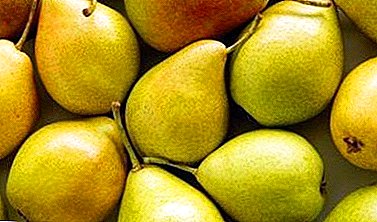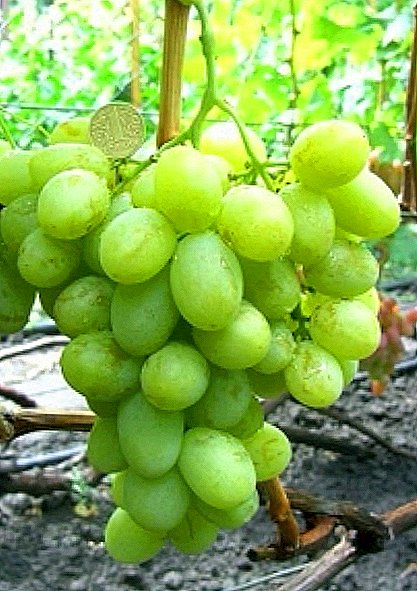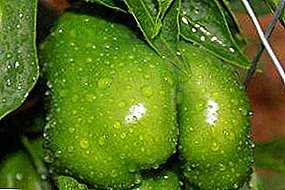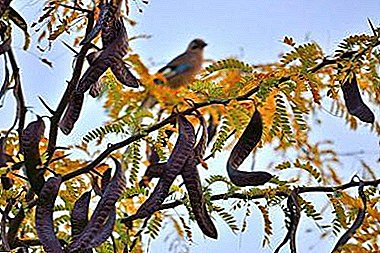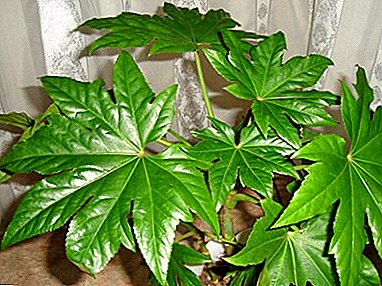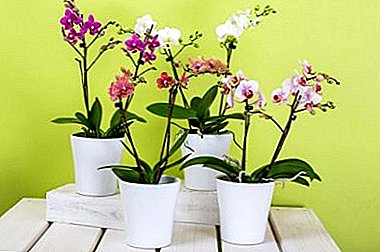
A lover of garden shrubs, once he saw a blooming hydrangea, will certainly wonder: how to get on your site this beautiful plant. The shrub is unpretentious and subject to the conditions of wintering during the vegetative period is characterized by abundant flowering. Propagation of hydrangea can be a variety of ways.
Rules for growing hydrangeas

This shrub prefers plenty of suntherefore, it is recommended to plant it in the open. But provided that there it will be protected from wind and drafts.
Hydrangea does not require any special care. It is only important to choose the right soil composition for her - she prefers slightly acid, loose formulations and perfect does not tolerate lime impurities. The sand is not suitable for it either, since nutrients are leached from it at high speed.
Further care consists of watering and fertilizing. In winter, bushes are necessary shelter, as they are thermophilic and do not tolerate a significant decrease in temperature.
To stimulate flowering bushes need spring pruning. Pruned the tops of the shoots, leaving on each three or four flower buds.
How does hydrangea reproduce?
If you or your friends grow hydrangea on the site, you can get additional shrubs using vegetative methods.

Dividing bush
Such a way is possible even for a beginner gardener.
The procedure is carried out in the springas soon as the plant wakes up from hibernation and begins to dissolve the first leaves. The bush is dug and divided into several parts. The separation must be done in such a way that each copy is rooting kidney.
Divided roots sprinkled with coal for disinfection. Bushes are planted in the wells, without digging the root neck, plentifully watered and mulched.
After planting, the plants should be pritenyat so that they take root.
Layering

Formation of layering - the most common way breeding. To obtain a new plant from an adult bush at the very beginning of summer, an extremely strongly developed shoot is selected. A hole is made near the bush (20 cm. Depth) and watered.
Scheduled shoots are bent and placed in a hole, sprinkled with earth. For reliability, it is necessary to fix the escape with a wooden slingshot or a wire clip. This is your future sapling. Moisture and nutrients otvodok receive when watering and feeding the main bush. Keep the soil moist for the first few weeks.
The top of the dug-out shoot is placed vertically, tied to a peg stuck next to it. The procedure is carried out before flowering.
Closer to the fall, when the hydrangea ottsvetёt, layering neatly cut off from the bush. Do not dig it immediately after cutting. - let me get used to self-existence.
Experienced flower growers are advised to transplant layers only on second yearwhen he picks up the root mass and gives shoots. Bush dig with a lump of earth and transplanted into a separate hole. The result is a finished seedling, from which the next year will form a full-fledged plant.
Flowers on the specimen received by the layering appear in the third year.
Getting hydrangea from cuttings

Reproduction of hydrangea cuttings. Planting cuttings.
This breeding method is considered most affordable and productive. With the help of grafting, you can immediately get a lot of seedlings from one uterine bush.
Time for grafting any suitable. Only cutting the hydrangea in the fall involves the cultivation of planting material at home, followed by planting in open ground. Propagation by cuttings consists of several stages:
- Procurement of material.
Proper cutting of blanks is half the success. Cutting is recommended in the morning or on a cloudy day. Fit exclusively annuals shoots from which ten centimeter cuttings are cut with pruners or shears.
Remove the lower leaves from the cuttings, leaving two shortened upper leaves and two or three buds.
- Rooting.
Cut off the workpieces tie a bunch of three or four pieces. The lower cut is processed by the root - by the creator, the upper - by the disinfecting solution (potassium permanganate, brilliant green).
For planting prepare a mixture of turf, peat and sand (1X3X4), which is treated with steam for disinfection. The substrate is buried 5 cm in this substrate. The cuttings are sprayed several times a day from a spray bottle.
 Rooting blanks should be covered with transparent caps. Once a week, landing is ventilated. Sprouts give roots in about a month. At this time caps removed from them.
Rooting blanks should be covered with transparent caps. Once a week, landing is ventilated. Sprouts give roots in about a month. At this time caps removed from them.
Alternatively, the formation of roots can be carried out in water. Water should be set aside to remove calcium salts. When the roots grow on the cuttings in size 2-3 cm, they are seated in pots with soil.
- Planting sprouts.
If grafting was carried out in spring or summer, they can be immediately landed on the prepared site. Once in a separate well, the sprout begins to quickly form the root system. Young seedlings carefully shelter for the winter.
In the autumn cuttings billet planted in pots and grows in room conditions. Landing in open ground is carried out after the threat of frost has passed.
Planting Hydrangea Seeds
From your own bush get a seed material pretty problematic, as they rarely have time to mature in a short summer.
 The most suitable period for crops - autumn. This is due to the fact that by the onset of heat the seedlings will be ready for hardening outside.
The most suitable period for crops - autumn. This is due to the fact that by the onset of heat the seedlings will be ready for hardening outside.
For crops, flat containers are prepared, filled with a mixture of sand, peat and turf soil. Seeds, dry or pre-germinated, spread over the surface without sprinkling. Crops are moistened with a spray bottle and covered with glass.
For germination, boxes are placed in a bright, warm place, but not under the sun.
If direct sunlight falls on a box with crops, a greenhouse effect will be created under the glass and the seeds will die.
Glass from the tank should be removed as soon as the first shoots appear. Usually, seedlings appear unfriendly, so they should be sown not infrequently.
Sprouts dive 2 times - in the phase of blooming cotyledons and after the appearance of 4-5 true leaves. During the second pick, sprouts are planted in separate pots. After they start, you need to begin hardening the plants. To do this, on warm days, they are taken out into the street.
Make sure that the plants do not fall into the sun, they should be kept exclusively in the shade.
Hydrangeas grown from seeds in the open ground are recommended to be planted only for the third year. Young specimens do not overwinter, so for the winter they are brought into the house. By the third spring the bushes will develop a good root system, and they can be planted.
If the sprouts in the first year will gather buds, they need to be removed.

Kids hydrangea
Babies are called side shoots on the main lignified stems of hydrangea. This process, which grew out of the kidney, quickly develops the roots and turns into a full-fledged shrub. It is recommended to plant babies in a mixture of turf soil, sand and peat. The mixture must be acidified.
For hydrangeas ready store soil for azaleas (rhododendrons).
The baby is carefully separated from the main stem, treated with the lower end of the root-former and put in a pot. The procedure is carried out in the fall and grow a copy at home. The young bush can be planted in open ground for the second year, after quenching in the first vegetative period.
When flower buds appear on the bush, they are immediately removed, preventing them from dismissing. In the process of growing the baby should be fed with mineral and organic fertilizers.
The reproduction of hydrangea garden - a process that does not require the use of special knowledge or special efforts. Even a gardener can handle it - a novice.
A photo
More photos of hydrangea see below:







